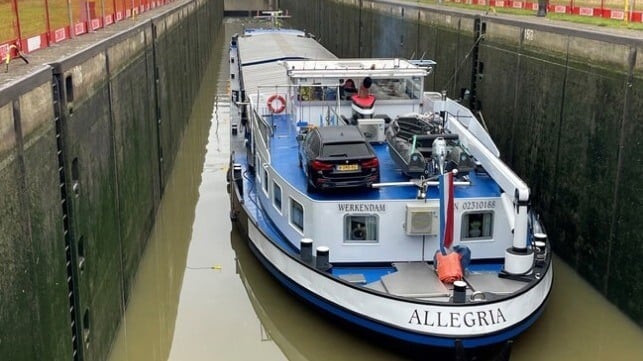Vessels Trapped on Saar and Moselle Freed So That Lock Repairs Can Begin
Successful Recovery of Vessels on Saar and Moselle

The Federal Waterways and Shipping Administration (WSA) has announced a significant achievement in the recovery of vessels trapped on the Saar River in France and the Moselle River in Germany. As of today, all vessels that had been stuck above the lock at Müden, Germany, have been successfully freed. This accomplishment comes ahead of schedule, with the WSA now aiming to reopen the lock by early February, more than a month earlier than initially projected. This recovery effort highlights the importance of effective coordination and teamwork in overcoming logistical challenges in waterway management.
Emergency Operations and Challenges Faced
The recovery operation was no small feat. Over a span of just ten days, the WSA conducted a total of 78 emergency lock operations. These efforts resulted in the clearance of 72 vessels that had been stranded along the rivers. The task required immense coordination among various teams and resources. The lock gates had been destroyed following an incident on December 8, when a ship failed to stop during a locking operation. This incident left many vessels unable to continue their journeys, creating a significant backlog.
To address this issue, the WSA devised a temporary solution that involved manually placing removable dam beams for each locking operation. These beams are typically used only for maintenance purposes. The operation was grueling, requiring 192 hours of continuous work under various weather conditions. The first vessel managed to pass through the lock on December 16, marking a crucial milestone in the recovery process. Throughout the operation, the beams were placed over 1,000 times, and chain hooks were attached more than 4,000 times. Divers played a critical role, entering the chamber 1,840 times to secure the chains into the eyelets. After eight days of relentless effort, a total of 70 ships had successfully navigated through the lock.
Future Repairs and Economic Impact
With the successful clearance of vessels, the lock is now closed for repairs. The WSA has outlined a comprehensive plan to restore the lock to full functionality. The repair process will involve setting the beams into place and draining the chamber. Scaffolding will be erected, and the concrete will undergo sandblasting. Additionally, two new sealing strips, each measuring 12 meters, will be fabricated and installed. New concrete will also be poured to repair the damage sustained during the incident. Furthermore, two gate frames manufactured in 2005 will be prepared, and four new neck bearing blocks will be produced.
The timeline for these repairs indicates that all components will be moved to the lock at Müden by January 15, with reassembly expected to commence shortly thereafter. The Müden lock serves as a vital link for the transportation of goods, fuel, and passengers traveling from the Rhine into Western Germany, Luxembourg, and France. The temporary closure of the lock has forced companies like ArcelorMittal, which operates in Luxembourg, to seek alternative routes for transporting materials. Authorities in Luxembourg have collaborated with the company to adjust regulations for the transit of heavy goods by road. This situation underscores the lock’s critical role in regional commerce and the need for swift recovery and repair efforts to minimize economic disruption.
